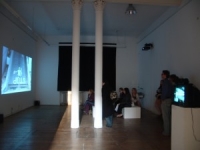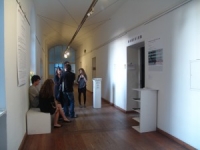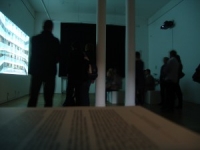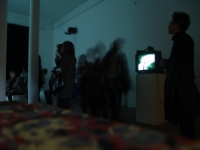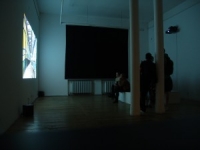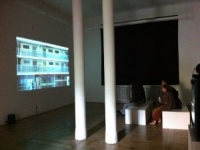 |
|
 |
|
 |
|
 |
|
`
MAP OFFICE
RUNSCAPE
Curated by Rachel Rits-Volloch
Preview over Gallery Weekend, 29 – 30 April 2011, 12:00 – 19:00
Vernissage 6 May 2011, 19:00 – 22:00
Artist-run Workshop with Laurent Gutierrez and Valérie Portefaix:
11 June 16:00-18:00 at M O M E N T U M /Berlin and
14 June 18:30 at the Universitat Der Kunste (UDK)
Finnisage 26 June 16:00 – 18:00
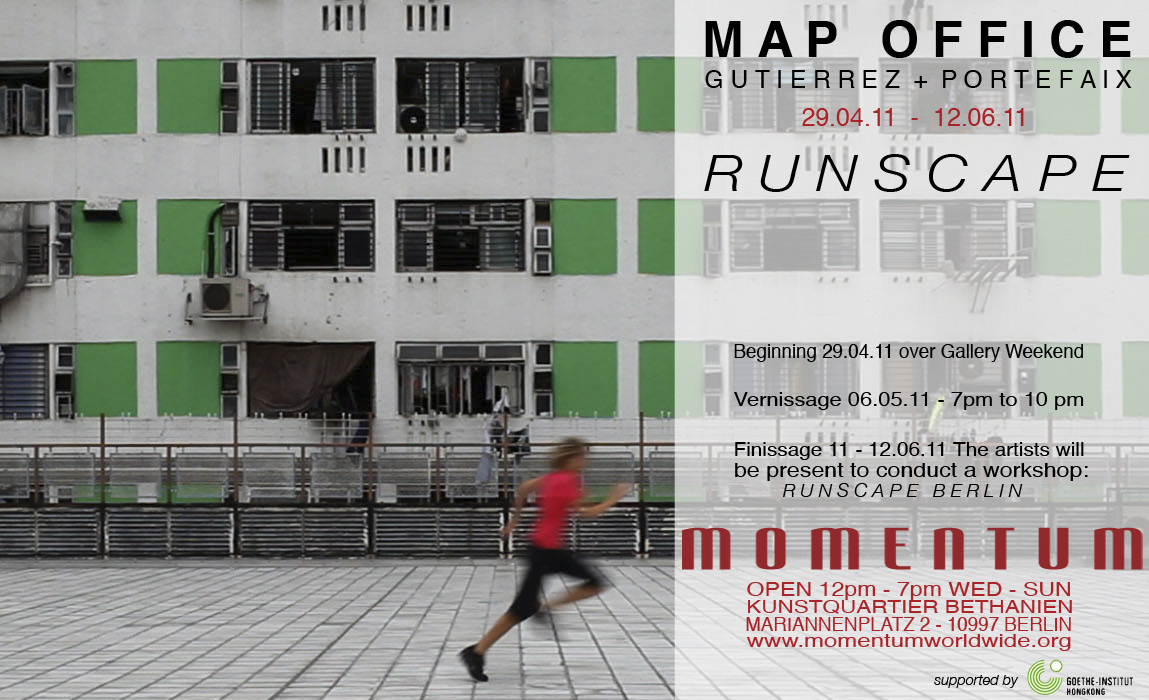
Runscape is a poetic act of resistance
Runscape is a politic act of defiance
of the urban authority
with its surveillance and restrictions on movement.
The Babel City, like Cyberspace, is filled with gaps and voids.
(Excerpt from RUNSCAPE)
ABOUT:
MAP OFFICE is a multidisciplinary platform devised by Laurent Gutierrez (Casablanca, 1966) and Valérie Portefaix (Saint-Etienne, 1969). This duo of artists/architects has been based in Hong Kong since 1996, working on physical and imaginary territories using varied means of expression including drawing, photographs, video, installations, performance and literary and theoretical texts. Their entire project forms a critique of spatio-temporal anomalies and documents how human beings subvert and appropriate space.
Laurent Gutierrez is an Associate Professor at the School of Design, The Hong Kong Polytechnic University where he leads the Environment and Interior Design discipline and the Master of Strategic Design as well as the Master in Urban Environments Design. He is also the co-director of SD SPACE LAB. He is currently doing a PhD on the “Processes of Modernization and Urbanization in China focusing on the Pearl River Delta region”.
Valérie Portefaix is the principal of MAP OFFICE. She received her Master of Architecture degree from School of Architecture Paris-Belleville and a PhD in Urbanism from University Pierre Mendes France. She is currently a Visiting Assistant Professor at the School of Design, The Hong Kong Polytechnic University.
Secondary Title: When running remains the only unbounded space in the urban field.
Completion Date: June 2010
Running Time: 24′ 18″
Country of Production: Hong Kong SAR – CHINA
Shooting Location: Hong Kong
Shooting Format: Full HD (Canon EOS 5D Mark II)
Screening Format: BETA SP – PAL 16/9 – STEREO
Language: English Subtitled
Director: Gutierrez + Portefaix
Text, Image and Sound editing: Gutierrez + Portefaix
Cast: Gaspar Gutierrez, Yannick Ben
Voice: Norman Jackson Ford
Music: A Roller Control
STREET MOVIE
www.streetmovie.net
Production: MAP OFFICE
www.map-office.com
Title: VIRAL PROJECT
Artists: MAP OFFICE (Laurent Gutierrez + Valérie Portefaix)
Year: 2003
Duration: 08’17”
Medium: DV
Director: Gutierrez + Portefaix
Text, Image and Sound editing: Gutierrez + Portefaix
Music: Ryojj Ikeda
Production: MAP OFFICE
Day 2 of the RUNSCAPE Berlin Workshop is on Tuesday 14 June at 18:30
AT THE UNIVERSITÄT DER KÜNSTE (UDK)
FACULTY OF ARCHITECTURE, IN AUDITORIUM 336
HARDENBERGSTRASSE 32, 10623 BERLIN
VIRAL OPERATION (2003)
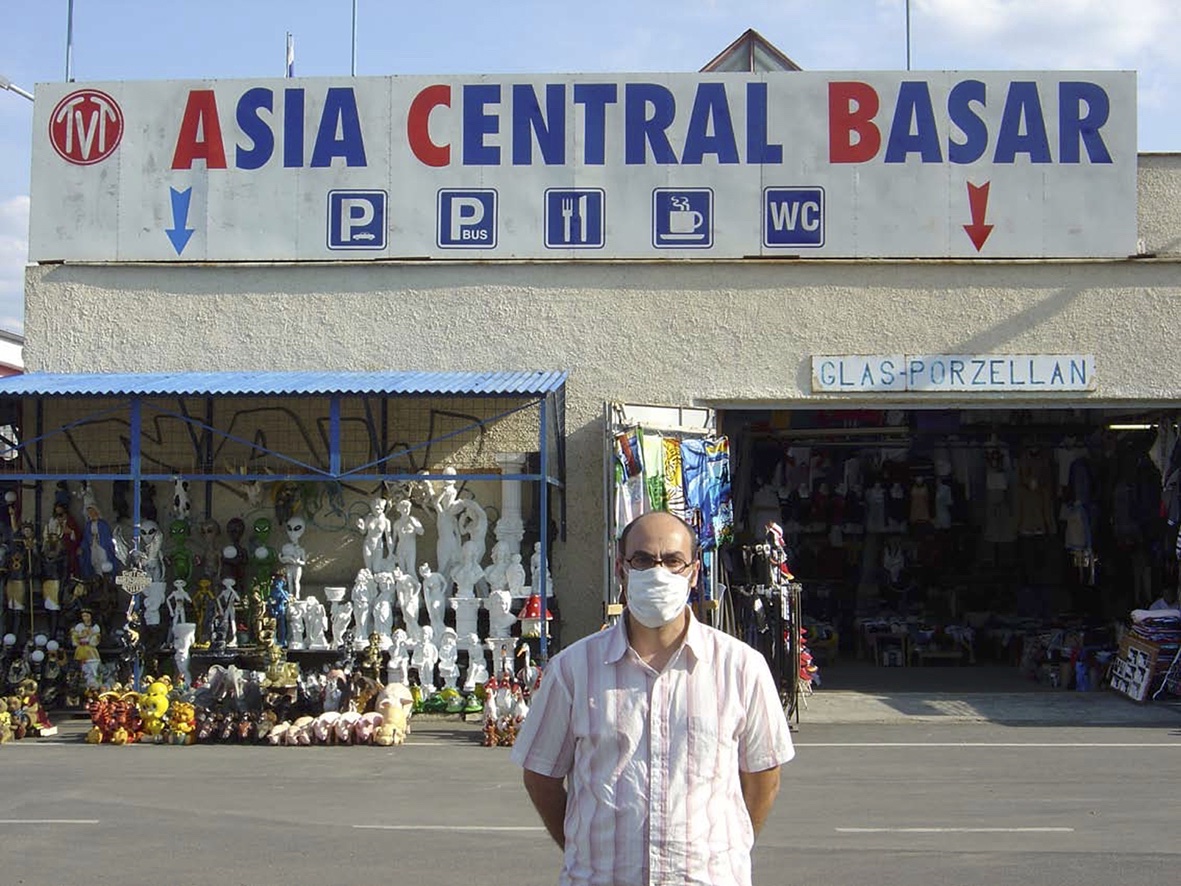
Produced in response to the open call to reflect on possible routes from Jerusalem and Berlin to Venice for the Utopia Station project of the 2003 Venice Biennale, Viral Operation seizes upon the figurations of unintentional biological threat and the maintenance of the state and body by experimenting with the devolution of borders within the potentially utopian platform of continental Europe. Presented as a short video, the project follows MAP Office as they arrive in Berlin via the Hong Kong International Airport wearing the surgical masks that are considered, at least in greater China, a social nicety more than anything threatening. During the time of SARS, however, this appearance coupled with their point of origin made them a potential contaminant to the geographic health of the region; leaving the airport, they are accompanied by armed security guards.
As they make a point to cross as many land borders in central and eastern Europe as possible on their way to Italy, this situation remains much the same. Driving through checkpoint after checkpoint, they are asked to remove their masks for identification purposes (because, as the viewer is reminded, covering the face is illegal, as is the continued video documentation of these exchanges). As in other projects like Maskbook and Second Line, the mask functions as an over-determined signifier of identity and desire; in this case, however, it becomes a visual clue to a condition that does not actually exist; using this simple mechanism to test the durability of the European dream, it becomes clear that the body and the border are an enabling pair as much as they are political combatants.
[Robin Peckham]
RUNSCAPE (2010)
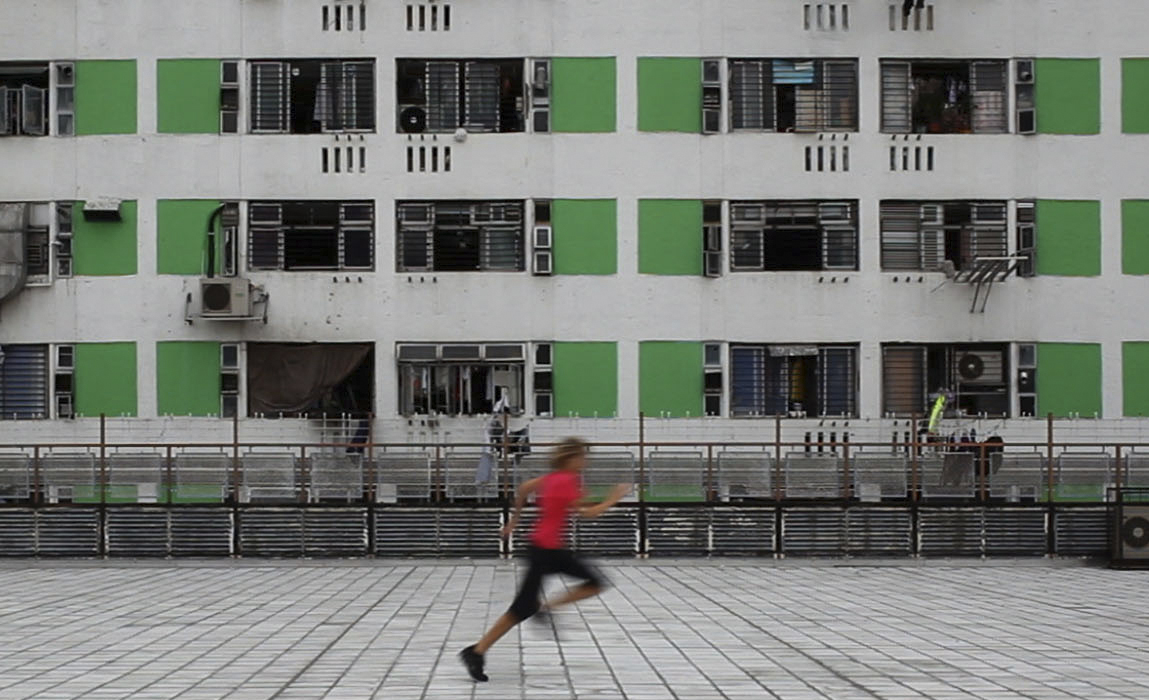
Runscape is a film that depicts two young men sprinting through the public spaces of Hong Kong, almost invariably via the visual mode of the long shot, while a narrator describes this action through the rhetoric of post-structuralist urban theory. This narration makes repeated reference to a range of texts from the psychogeographical dérive of urbanism in Guy Debord and the Situationists to the biopolitical machines of Gilles Deleuze to the literary styles of Jean-Luc Nancy. The runners both follow existing paths and establish new ones, moving in straight lines through crowds and across rooftops while also using exterior walls as springboards for less-likely forms of motion. This is, however, far from parkour; it is a much more purposeful action that claims a certain territory or at least trajectory described within the narration through the image of the body as a “bullet that needs no gun. A soundtrack contributed by Hong Kong rock band A Roller Control complements this aesthetic violence, guiding the eye and ear of the viewer across this novel interpretation of the definition and uses of public space. In this action, invisible facades are constructed across a grid that spans the area between the codified signs of polished facades, an open-ended and performative notion of being-in-transit.
[Robin Peckham]
Runscape was shown along with “Viral Project” (2003) at MOMENTUM’s exhibition during Berlin’s 2011 Gallery Weekend, with Runscape subsequently gifted to the MOMENTUM Collection. In collaboration with MOMENTUM, MAP OFFICE returned to Berlin the following year to gather footage for Runscape Berlin, a work comprised of video and photography mapping the city of Berlin through its cinematic history.
“Why running in Berlin? Runscape Berlin proposes to break through historical lines and building blocs, to bypass new political borders and barricades, to be naked in the ruins of the gigantic worksite of the city. Running activates a new form of intensity in a city lacking of density. In Berlin, the urban substance opens on undefined fields where new personal histories can be written.”
[MAP OFFICE]
RUNSCAPE – ANAYLISIS by MELISSA LAM
The City is growing Inside of us…
A political act of defiance of the Urban Authority
With its surveillance and restrictions on movement.
[Excerpt from Film]
In 1996, when Jean Baudrillard first published “The Conspiracy of Art” he scandalized the international art community by declaring that contemporary art had no more reason to exist. The question of aesthetic banality and retreat from issues of public life and “the real” are questions that have plagued the art world for centuries, from the very first copied Renoir apple to Tino Sehgal or Sophie Calle experiences that anthropologically mix aesthetics, art and life. Baudrillard has since become interested in the simulations of reality set forth by film and vice versa.
In film, the work of simulation becomes drama, a comparative drama that seeks to simulate reality. Runscape is used to knit together the geography of Hong Kong, a cartography that trades on the idea of mapping by running through the streets (a young man is seen pounding / racing through the streets purposefully, in stark contrast to the plethora of crowds that are slowly inching forward along the traffic jammed pavement of Causeway Bay.) The runner dodges past pedestrians, runs diagonally through meticulously urban planned plazas, up flights of stairs and through the shopping malls of Hong Kong in order to appropriate the city on his own terms. The direction of his sprint, the contour of his cityscape is directed by his own desires, a remapping of cartography that allows him to remake the city in his own image. In Runscape, the idea is that a single individual can remap the cartography of the city, to redefine the city on each individual’s terms, to make each city mapping unique to each individual rather than a grouping of concepts, random census tracts, defunct neighborhoods and property blocks. The runner is at times cooperating with the city, in running along the stairs and sidewalks that are mandated, at other times, he jumps over unsuspecting walls and leaps over fences, pitting the city as an adversary, a challenge to his movement, testing the limitations of the concrete jungle as it slowly comes alive with the unorthodox use of its cityscape.
Political and cultural boundaries collapse as the figure jumps over districts in Causeway Bay, Central, and Aberdeen. The runner stitches a new type of geographical exploration that reimagines the terrain on a new mapped media. References and location systems zip by a sprinting figure in a rapidly moving short film where motion, major landmarks and assorted cultural topography become simply a simulation, simulacra of importance. Runscape is about the seduction of film as moving photography, images of Hong Kong flash by us in blinding images knit together only by the running figure as he races across the entire city.
The runner becomes also a performer, as he leaps and jumps, sprinting through the city, catching the eye of the strolling pedestrians as he breaks out of conventional modes of behavior, putting his body in action, moving faster than the city, as if internally pushed forward, as if fleeing or listening to a voice that was slowly speaking outside of everyone else’s sound register. The culture of the walking figure derived from the French Flaneur, the American Beat Poets, all contextualized and used in exploring and connecting the city streets. Runscape explores the liminal notions between film as public art with the city as landscape and cartography. The film knits the city together in a geography intersecting private and public space. The runner acts as artistic intervention creating an impact on the space itself. This is a creation of an unexplained inexplicable artwork on the street as it blurs the line between performance, a happening, fear, trauma, physical exercise, and rebellion.
American cartographer, Arthur H Robinson stated that a map not properly designed “will be a cartographic failure.” Robinson also stated, when considering all aspects of cartography that “map design is perhaps the most complex. A map must be fit to its audience. Map Office’s Runscape is a new kind of map that explores the history of running, forms of mapping, data, space and time, multiple dimensions, language and the body. Runscape uncovers the influence and possibilities of mapping in our world today. Maps have become easier to create, change, develop collaboratively and share. Depicting geographical areas, mindscapes and digital realms alike, these multidimensional maps express endlessly interconnected ideas and issues.
Going back to the beginning of his “postmodern” phase, Baudrillard begins his important essay “The Precession of the Simulacra” by recounting the feat of imperial map-makers in a story by Jorge Luis Borges who make a map so large and detailed that it covers the whole empire, existing in a one-to-one relationship with the territory underlying it. It is a perfect replica of the empire. After a while the map begins to fray and tatter, the citizens of the empire mourning its loss (having long taken the map – the simulacrum of the empire – for the real empire). Under the map the real territory has turned into a desert, a “desert of the real.” In its place, a simulacrum of reality – the frayed mega-map – is all that’s left.
Runscape is a bravura performance by Map Office in which they use the figure of a boy to stitch the city together in a mapping that creates a territorial relationship between the runner who runs, and the territory or terras that is beneath his feet. The city map does not exist without his performance. The runner, nor does his physical running exist outside of the map. When the runner stops, the city (like Borge’s map) will leave us in tattered ruins, and dissemble into nothing so much as a simulacrum of it’s former self.

IMAGE GALLERY:


 Back to Homepage
Back to Homepage

